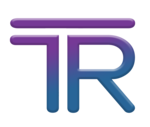IOT-BASED SOLAR TRACKER SYSTEM UTILIZING THINGER.IO FOR WEB MONITORING
Universitas Pendidikan Indonesia
Indonesia
Universitas Pendidikan Indonesia
Indonesia
Abstract
One of the factors to consider when producing electrical energy is the ability to produce an adequate amount of energy at a reasonable cost without causing any adverse effects on the environment. The objective of this research was to create a system that ensures that solar panels are always oriented to face the sun, thereby achieving the highest possible level of light intensity. The energy output efficiency of solar panels is considerably improved, resulting in cost savings and a reduced environmental impact, as a result of the increased light intensity received through the use of solar trackers. The solar tracking system was tested by measuring voltage, current, and power with a specially designed instrument. The results indicated that the use of a solar tracker resulted in a 9.87% increase in voltage, a 22.85% increase in current, and a 27.54% increase in power when compared to a static configuration. The voltage measurement error ranged from 0% to 1.4%, while the current measurement error ranged from 0% to 18%. Furthermore, the MPU-6050 sensor exhibited an average tilt angle error of 1.6%.
Keywords
References
E. F. Syahram, M. Machmud Effendy, and N. Setyawan, “Sun position forecasting menggunakan metode RNN-LSTM sebagai referensi pengendalian daya solar cell,” 2020.
D. O. Machado, J. Normey-Rico, and G. A. de Andrade, “A 2DOF thermosolar concentrator proposal: Solar tracking and disturbance rejection using proportional defocus,” in Proceedings of the ISES Solar World Congress 2019 and IEA SHC International Conference on Solar Heating and Cooling for Buildings and Industry 2019, International Solar Energy Society, 2020, pp. 32–42. doi: 10.18086/swc.2019.01.05.
J. E. Elektro, H. B. Nurjaman, and T. Purnama, “Pembangkit Listrik Tenaga Surya (PLTS) sebagai solusi energi terbarukan rumah tangga,” Nov. 2022. doi: 10.21831/jee.v6i2.51617.
M. Amir Abas, M. Hilmi Fadzil S, S. A. Kadir, and A. Khusairy Azim, “Improved structure of solar tracker with microcontroller based control,” in Proceedings - 2010 2nd International Conference on Advances in Computing, Control and Telecommunication Technologies, ACT 2010, 2010, pp. 55–59. doi: 10.1109/ACT.2010.28.
M. Sayeduzzaman, A. Mahmud, K. Chamberlain, and A. Negi, “Design and implementation of an automated solar tracking system to run utility systems at minimal loads during load-shedding by charging solar batteries,” in Advances in Transdisciplinary Engineering, IOS Press BV, Dec. 2022, pp. 699–704. doi: 10.3233/ATDE221224.
A. El Hammoumi, S. Motahhir, A. El Ghzizal, A. Chalh, and A. Derouich, “A simple and low-cost active dual-axis solar tracker,” Energy Sci Eng, vol. 6, no. 5, pp. 607–620, Oct. 2018, doi: 10.1002/ese3.236.
IEEE Electron Devices Society, Annual IEEE Computer Conference, H. IEEE Photovoltaic Specialists Conference 35 2010.06.20-25 Honolulu, and H. PVSC 35 2010.06.20-25 Honolulu, 35th IEEE Photovoltaic Specialists Conference (PVSC), 2010 20-25 June 2010, Honolulu, Hawaii ; conference proceedings.
M. Fachrurrozy, A. N. Aziz, and H. Hartono, “Otomatisasi tracking panel surya berbasis arduino uno dalam penggunaan energi alternatif,” Jurnal Teras Fisika, vol. 2, no. 1, p. 22, Feb. 2019, doi: 10.20884/1.jtf.2019.2.1.1369.
Larbi Tebessi University, Institute of Electrical and Electronics Engineers. Algeria Section, and Institute of Electrical and Electronics Engineers, Proceedings, 2019 1st International Conference on Sustainable Renewable Energy Systems and Applications (ICSRESA) : Tebessa, Algeria, 04 to 05 December 2019.
I. Husnaini and E. Astrid, “Design and performance of dual axis solar tracker based on light sensors to maximize the photovoltaic energy output,” J Theor Appl Inf Technol, vol. 100, p. 22, 2022, [Online]. Available: www.jatit.org
ABES Engineering College and Institute of Electrical and Electronics Engineers, 3rd IEEE International Conference on “Computational Intelligence and Communication Technology” (IEEE-CICT 2017) : 9th & 10th February, 2017, ABES Engineering College, Ghaziabad.
F. Y. Prasetyawati, “Calibration and validation of ina219 as sensor power monitoring system using linear regression,” Dec. 2023.
G. Gumilar and H. H. Rachmat, “Sistem pendeteksi jatuh wireless berbasis sensor accelerometer,” TELKA, vol. 4, no. 2, pp. 132–141, 2018.
V. Rahmadhani, W. Arum, U. Bhayangkara, and J. Raya, “Literatue review internet of think (iot): sensor, konektifitas dan qr code,” vol. 3, no. 2, 2022, doi: 10.38035/jmpis.v3i2.
B. Hamsen and I. R. Widiasari, “Rancang bangun perangkat lunak iot gateway dari field ke cloud berbasis protocol komunikasi MQTT",” AITI: Jurnal Teknologi Informasi, vol. 19, no. Februari, pp. 1–15, 2022.
R. Fadli Isnanto, N. Syafitri, H. Ubaya Fakultas Ilmu Komputer, U. Sriwijaya Jl Palembang-Indralaya Km, O. Ilir, and S. Selatan, “Smart farming: thinger.io sebagai web monitoring kondisi tanah dengan menerapkan konsep internet of things,” Palembang, Oct. 2022. doi: https://doi.org/10.18495/generic.v13i2.139
M. Engin, “Machines controller design for parallel mechanism solar tracker,” MDPI, 2023, doi: 10.3390/machines.



